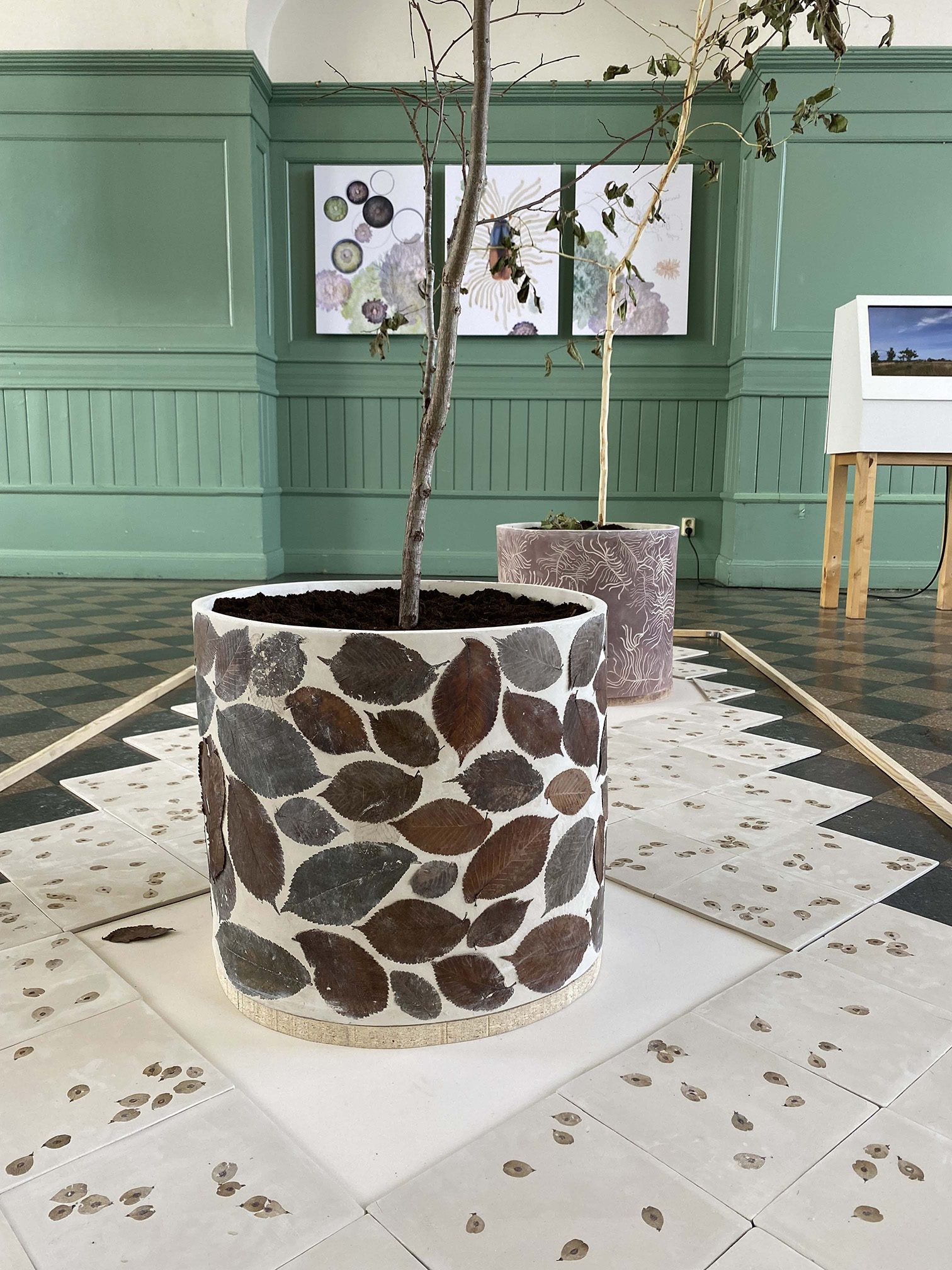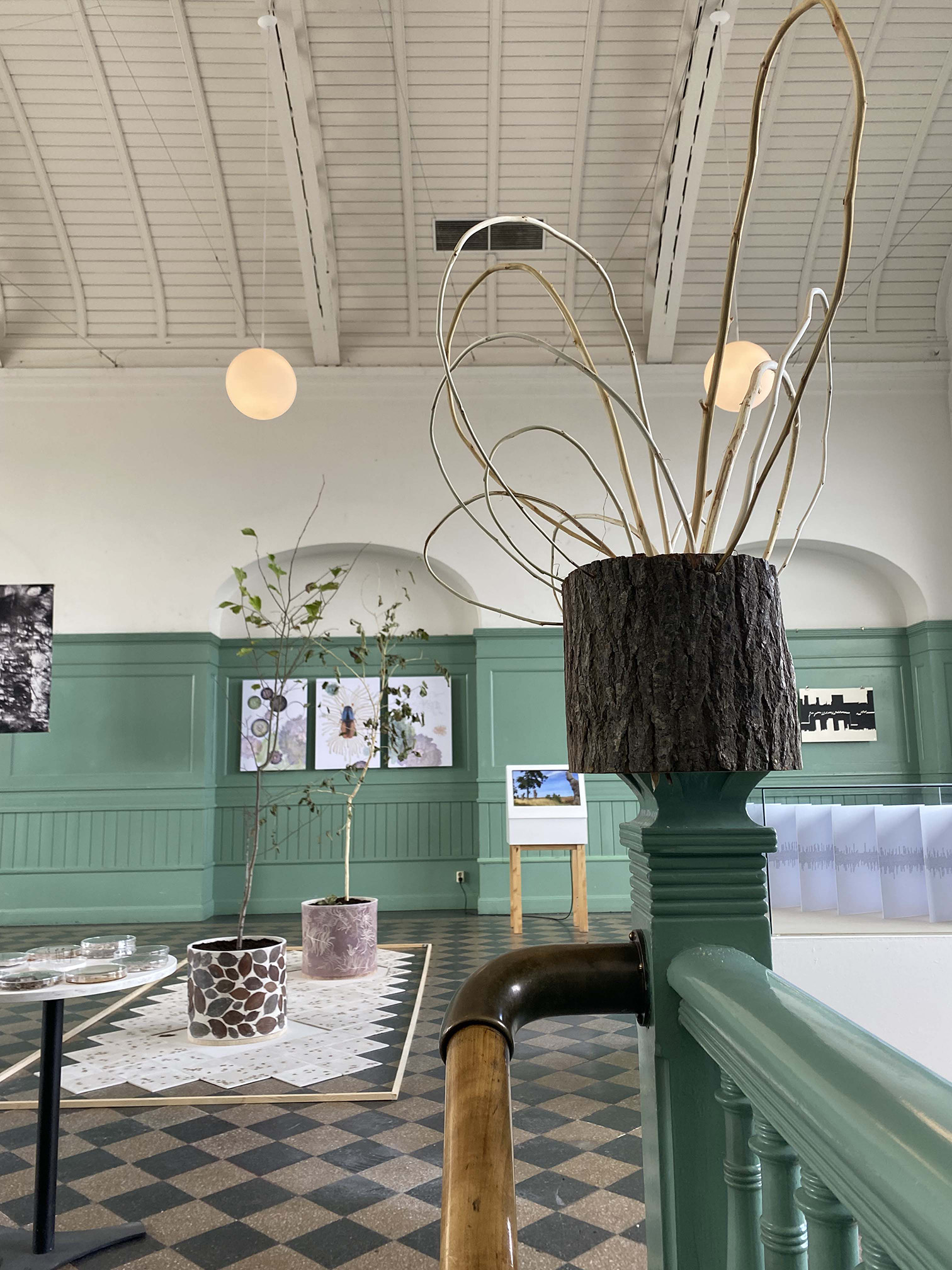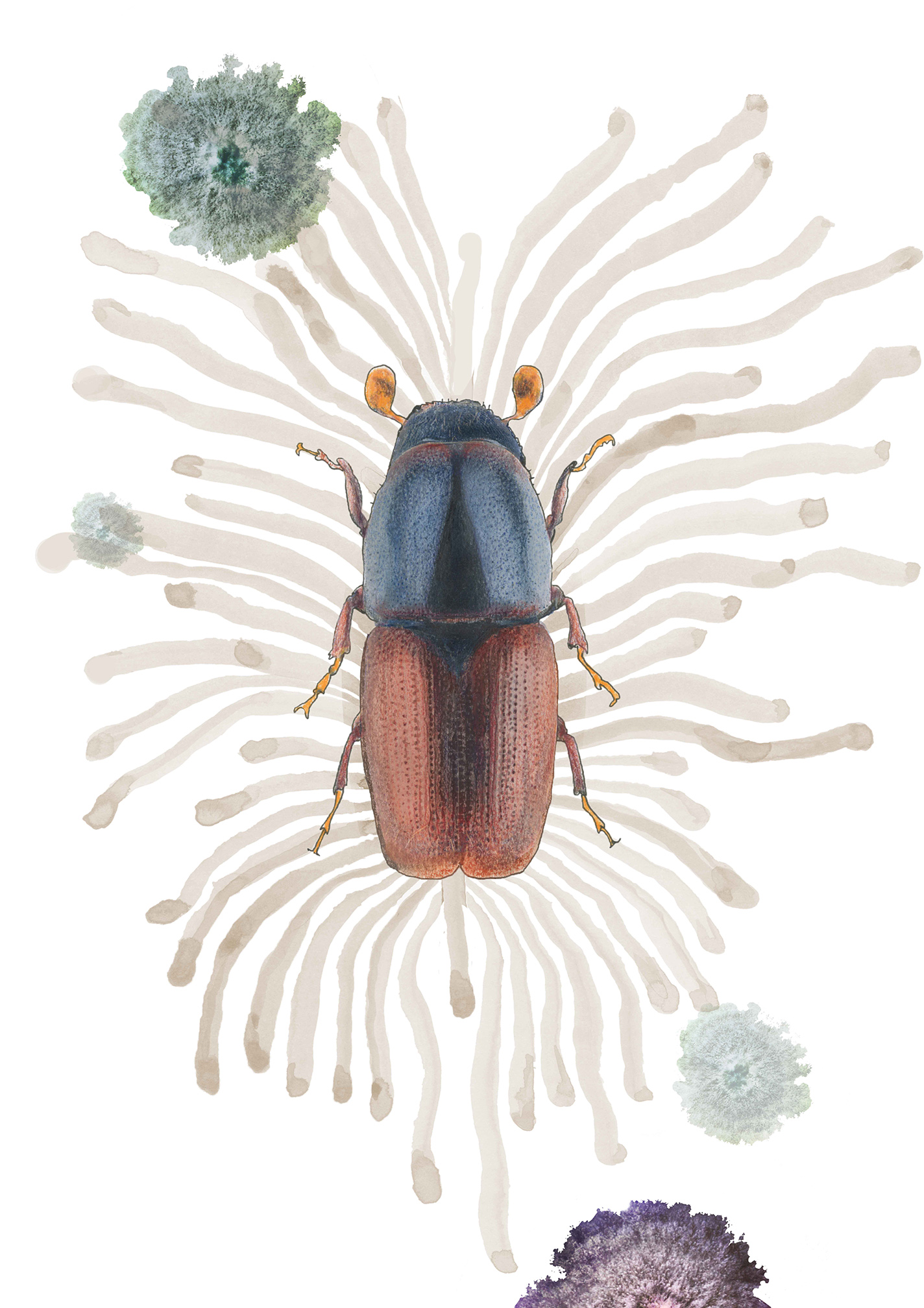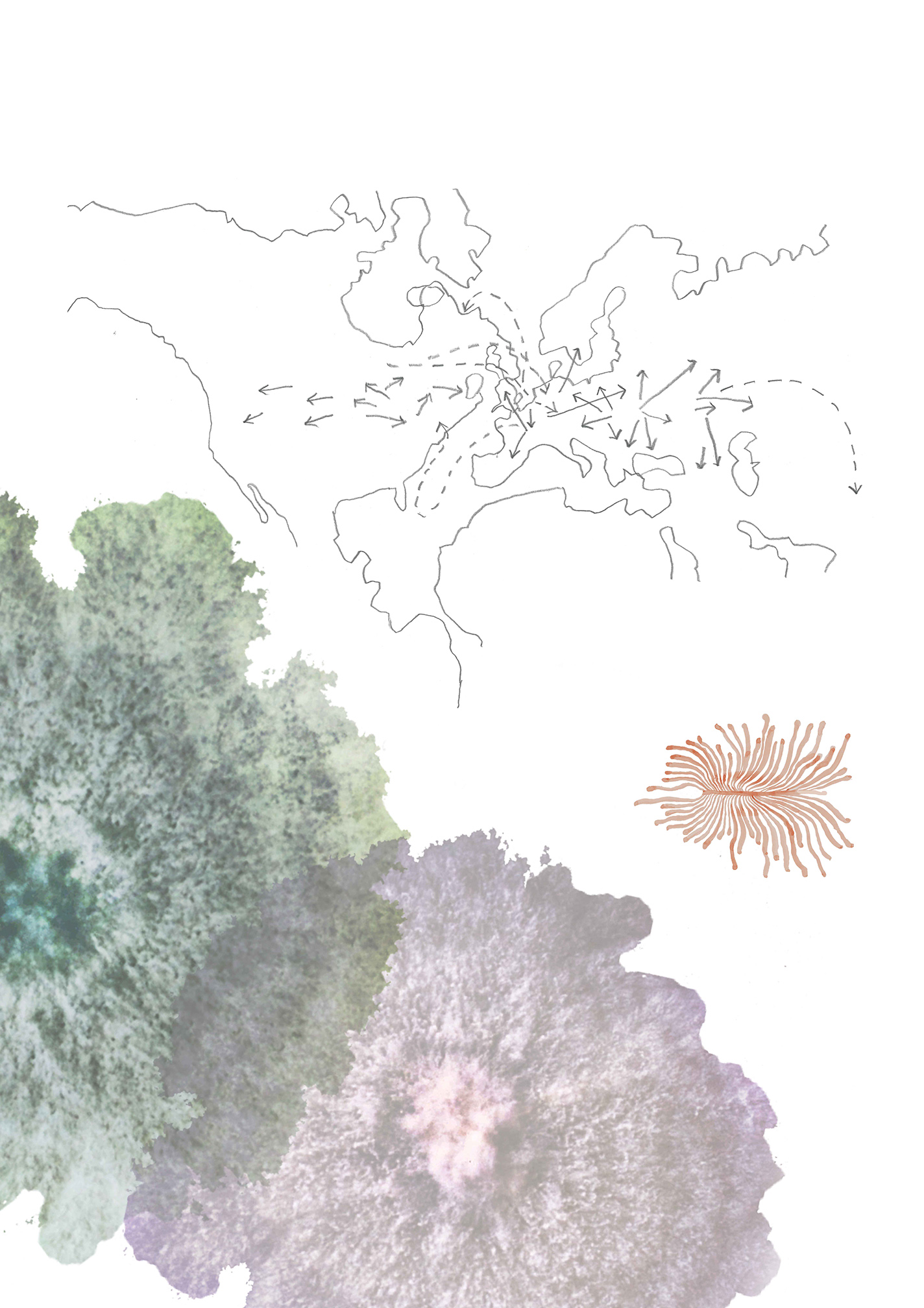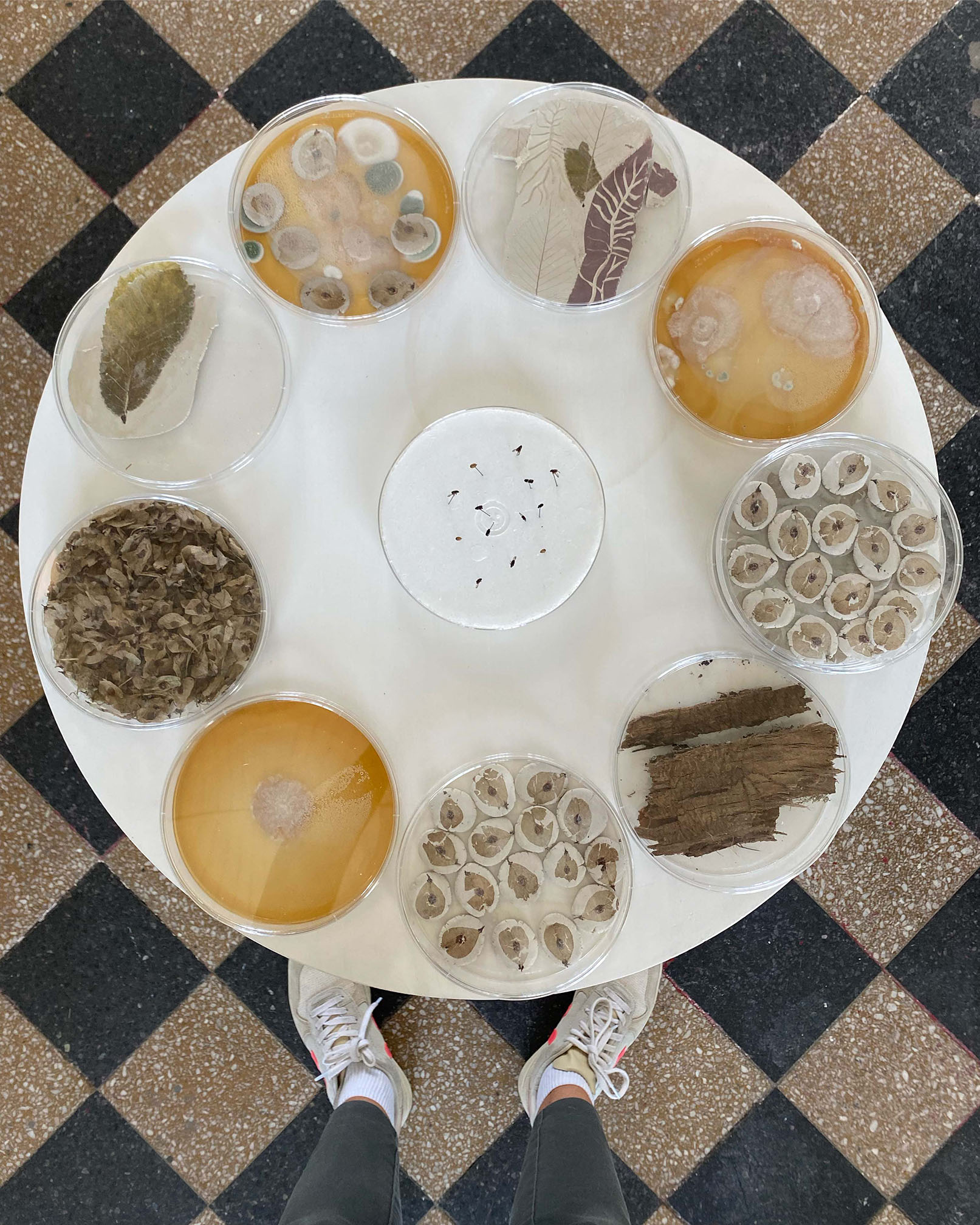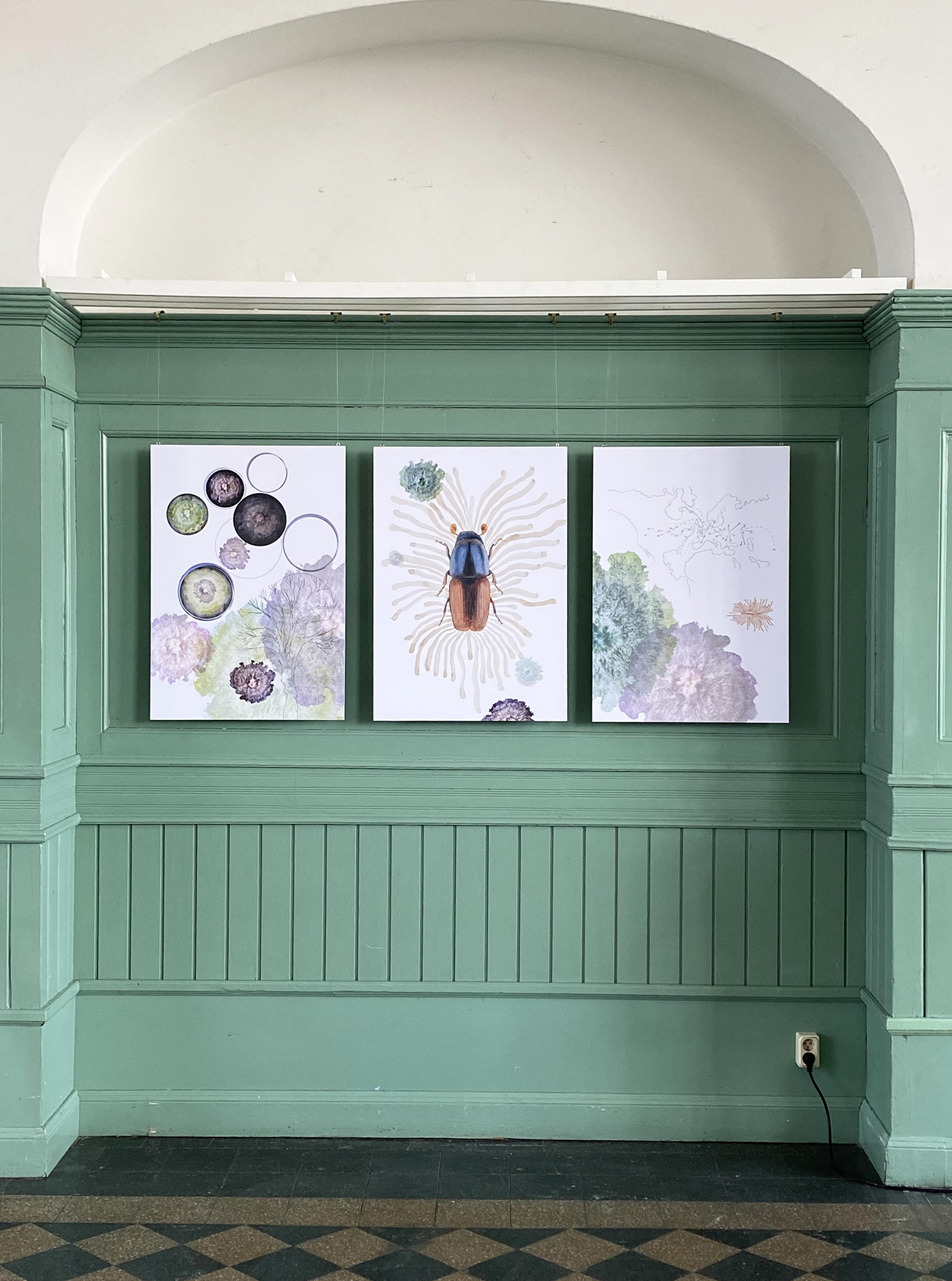Foot prints
In the work Splint I have explored how humans and other vectors, carriers, move invasive alien species to new areas where they disrupt established ecosystems. To illustrate the problem, I have used the iconic elm tree as a clear and symbolic marker. Dutch elm disease hits hard and the tree skeletons that remain or the spatialities that are suddenly empty are tangible and emotional for many. Dutch elm disease is caused by the fungus Ophiostoma novo ulmi but is spread by a small insect, the elm bark beetle, which lives under the bark of dead or weakened elms. The splinter beetle acts as a vector when the spores of the fungus attach to the beetle moving from an infected tree to a healthy one. But for the fungus to reach new areas further away, human intervention is required to move infected wood or tools that are infected. The problem of Dutch elm disease is therefore dependent on large-scale movements, but the damage occurs at a micro level, which then has large-scale consequences. It is these micro and macro perspectives that I want to portray in the work. By working with materials from elm seeds, leaves, branches and logs, I can make the problem visible and express it through artistic exploration. I also grow the fungus that causes disease and capture splinter beetles and study their behavior. Various attempts at exploration are presented with examples on a small table in the installation. In addition, there are two vessels in unfired clay, one with a relief that mimics the paths of the elm splinter beetle. The other has withering elm leaves incised into the surface that eventually drop and fall off. Two young elms are placed in the vessels, one without bark. The vessels are placed on a tiled floor that is also made of unfired clay. Strewn across the floor are elm leaves that have frozen in their journey. The work also includes three illustrations of the splinter drill, Ophiostoma novo ulmi, and its movement and distribution. A film showing the Albrunna elm avenue, which originally consisted of more than 200 elms, all affected by Dutch elm disease, runs on a loop.

